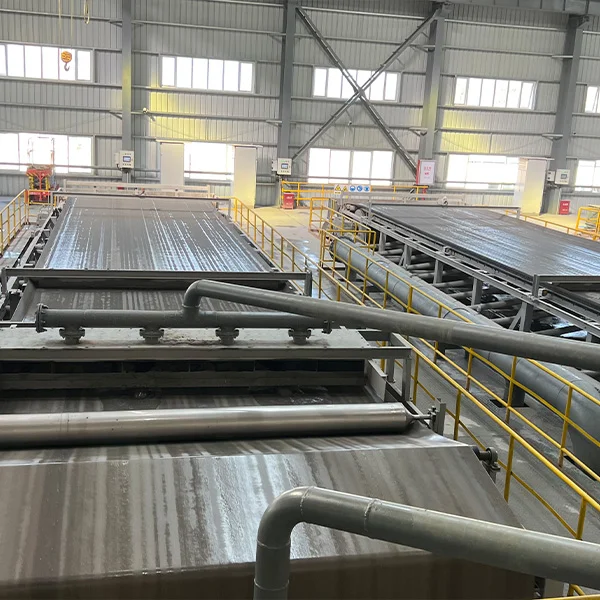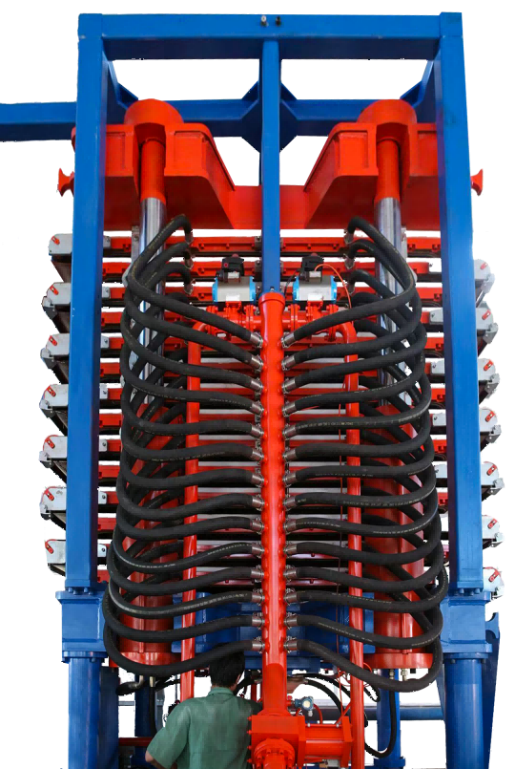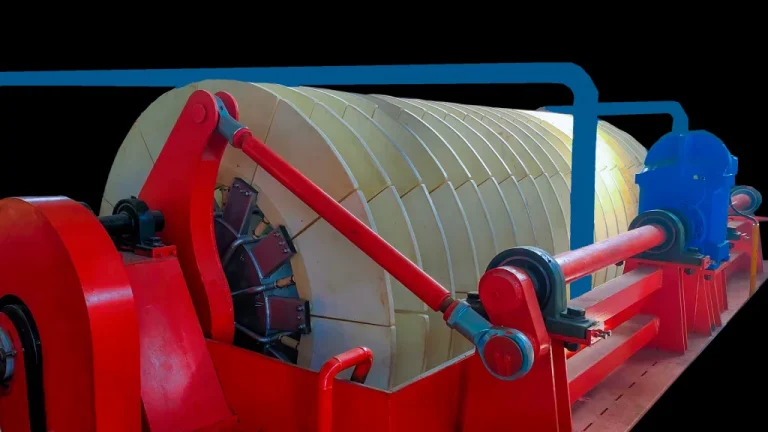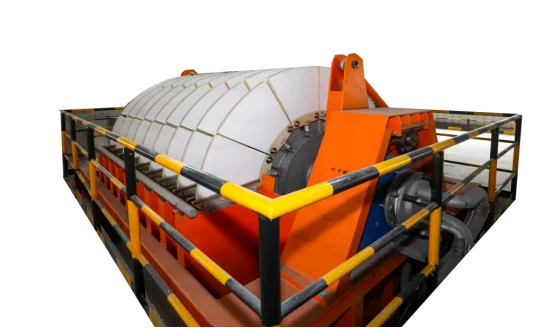Advancements in Belt Filter Design

Key Features of Modern Belt Filters
Modern Пояс фильтры have shaken up solid-liquid splitting with smart tech and fresh layouts. A top perk is their piece-by-piece build. This lets you tweak setups and move them easy. The gear can roll out ready after setup and testing. It saves both time and cash. Plus, these filters pack high-end control setups. They offer far-off and on-site handling for hands-free running. This lifts how well they work and cuts the need for constant eyeballing.
Another neat trick is how the filter cloth and rubber belt move together. This teamwork keeps things flowing—loading, sifting, rinsing, drying, and cloth refresh all happen nonstop. Different rubber belt supports—like rollers, air pads, flat trays, or multi-belt friction setups—cut drag and stretch the belt’s life.
These filters also shine with better sifting power thanks to zoned washing collection. You can rinse them forward or backward. There’s even optional high-pressure rinse systems to perk up cloth refresh and lifespan. Liquid dump choices like no-spill, top-level, or extra outlets give wiggle room based on what you need.
Improvements in Material Selection for Durability
Пояс фильтр toughness has leaped forward with picky material choices. Top-notch stuff gets picked to hit strict nation, trade, and firm rules. All outside parts are chosen for their cutting-edge tech, trusty nature, safe perks, and solid track record. This care keeps hiccups low and power high.
Take sturdy rubber belts with beefed-up edges, for example. They fend off wear during long hauls. Tossing in rust-proof materials makes these filters fit for tackling harsh chemicals or gritty slurries you see in factory work.
Enhanced Filtration Zones for Optimized Performance
Filter zone designs have stepped up to tune performance just right. Fixed vacuum boxes paired with steady rubber belts nail solid-liquid splits. The rubber belt and friction belt touch on the vacuum box’s slide deck to make a water-tight seal. This setup keeps leaks low while holding steady suction all through the sift.
Laying out sifting zones into rinse and dry spots bumps up efficiency too. Vacuum pull yanks out liquids while keeping solids on the cloth to shape a filter cake. That cake then shifts to rinse zones for a good scrub before hitting dry spots to shed dampness.
Applications of Belt Filter Technology
Use in Chemical and Mining Industries
Belt filters are must-haves in chemical and mining worlds for their knack at handling big loads fast. They shine in jobs like gypsum drying in flue gas cleanup or tailings handling. In mining, they split prized minerals from junk through spot-on solid-liquid tricks.
In chemical making, belt filters yank out gunk from liquid goods or pull solids from mushy mixes. Their nonstop run without much downtime fits them for huge industrial setups.
Role in Wastewater and Sewage Treatment
Belt filters play a huge part in wastewater cleanup. They’re key for pulling out floating bits from sewage before it hits rivers or gets reused in factory loops. With high-pressure rinse systems for cloth refresh, belt filters ensure low-moisture leftovers. This makes tossing or reusing them easier.
Their half- or fully-sealed builds let them tackle tricky stuff safely. They block stink leaks too—a big deal for city sewage plants.
Applications in Food and Beverage Production
In food and drink spots where clean rules reign, belt filters step up big. They keep separation on point to guard product purity. Think about:
- Juice Clearing:They strip pulp or grit from fruit drinks.
- Sugar Refining:They split molasses from sugar bits.
- Dairy Work:They’re big in whey protein pulls or milk clearing steps.
Their steady run under tight clean standards makes them gold across food-making tasks.
Efficiency Enhancements in Belt Filters
Innovations in Dewatering Techniques
Belt filters have seen big leaps in drying tricks. High-pressure rinse systems stand out. They boost cloth refresh, keeping it sharp over long stretches. This cuts breaks and running costs. Their piece-by-piece build makes setup and hauling simple too. It allows pre-fitting and testing, shaving off setup time.
The filter cloth and rubber belt moving in sync is a game-changer. It keeps loading, sifting, rinsing, drying, and cloth refresh rolling without stops. Better vacuum tech has sharpened solid-liquid splits too. Fixed vacuum boxes and water-tight seals between rubber and friction belts keep leaks low. They hold steady suction too.
Reduction of Cake Moisture Levels
Cutting cake dampness is key for trades needing smooth handling after sifting. Modern belt filters pull this off with beefed-up dry zones and top vacuum pull systems. Adding air-drying steps pumps up moisture shedding. Compressed air dries the cake good and proper.
Tough stuff like reinforced rubber belts helps here too. They’re built to take high squeeze during drying, keeping things humming even with sticky or fine bits. The BF Belt Filter, for one, gets low-moisture leftovers. This makes next steps or hauling smoother.
Integration of Multi-Stage Washing Systems
Multi-stage rinse systems have flipped cleaning power for belt filters. They let you rinse forward or backward, bending to what you need. Optional high-pressure rinse gear amps up cloth refresh big-time. It stretches their life a lot.
Zoned washing collection keeps each step solo yet tight in the sifting flow. This cuts mix-ups between stages while maxing rinse power. Liquid dump picks—like no-spill or extra outlets—tailor fixes for different factory wants.
Performance Optimization Strategies for Belt Filters
Importance of Proper Sludge Conditioning
Getting sludge ready right is vital for top belt filter work. This means tweaking the feed to boost its drying traits before it hits the system. Usual ways include tossing in coagulants or flocculants. These clump tiny bits into bigger bunches, making splits easier.
Modern belt filters pack smart control setups. They watch sludge traits live. These let you tweak things exact to keep sifting steady across shifting feeds. With good sludge prep, trades hit drier cakes and faster flow rates.
Adjusting Belt Speeds for Improved Filtration Efficiency
How fast the belt rolls shapes sifting power. Slow speeds give vacuum pull more time to yank liquid from the mush. This dries cakes better. Fast speeds hike flow but might skimp on drying.
High-end belt filters offer speed tweaks. Operators can dial in the sweet spot between flow and drying. The BF Belt Filter, for example, has far-off and on-site controls for auto runs. It lets you tweak speeds live based on what’s needed.
Impact of Feed Temperature on Filtration Rates
Feed heat sways sifting speed and system punch. Warmer feeds thin out mush, letting liquids slip through filter stuff easier. Too much heat, though, can hurt fragile parts or mess with material strength.
Modern belt filters are built to take a wide heat range without dropping off. Heat-tough materials keep them humming under all sorts of hot conditions.

Часто задаваемые вопросы (часто задаваемые вопросы)
How do multi-stage washing systems improve Пояс фильтр performance?
They boost cleaning power with forward or backward rinsing. They keep mix-ups low between steps too.
What role does sludge conditioning play in belt filter operations?
It perks up drying traits by clumping fine bits with coagulants or flocculants.
Can adjusting belt speeds affect filtration outcomes?
You bet! Tweaking speeds balances flow rates with drying punch based on what’s needed.
Why is feed temperature important in filtration processes?
It shifts mush thickness. Warmer feeds ease liquid flow through filter stuff but need heat-tough parts.
For questions on cutting-edge sifting fixes like belt filters or other gear from Янтай Хексин Экологическая защита оборудования Ко., ООО, reach out today!








